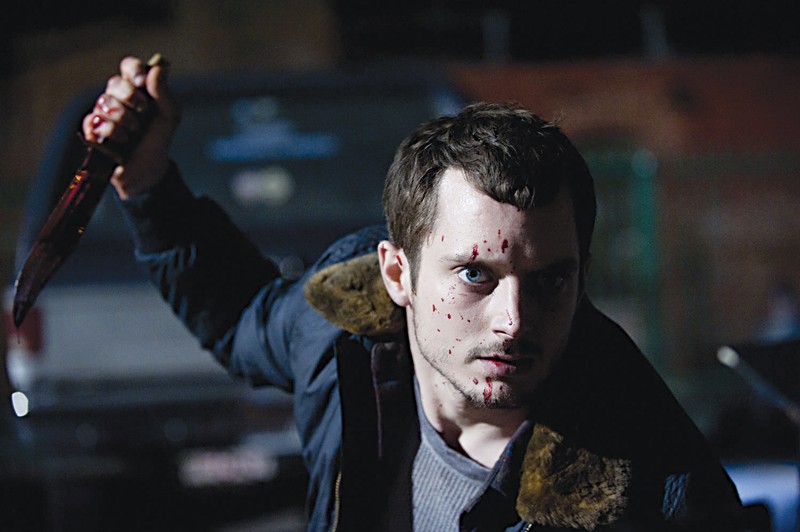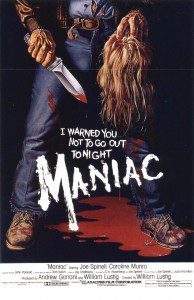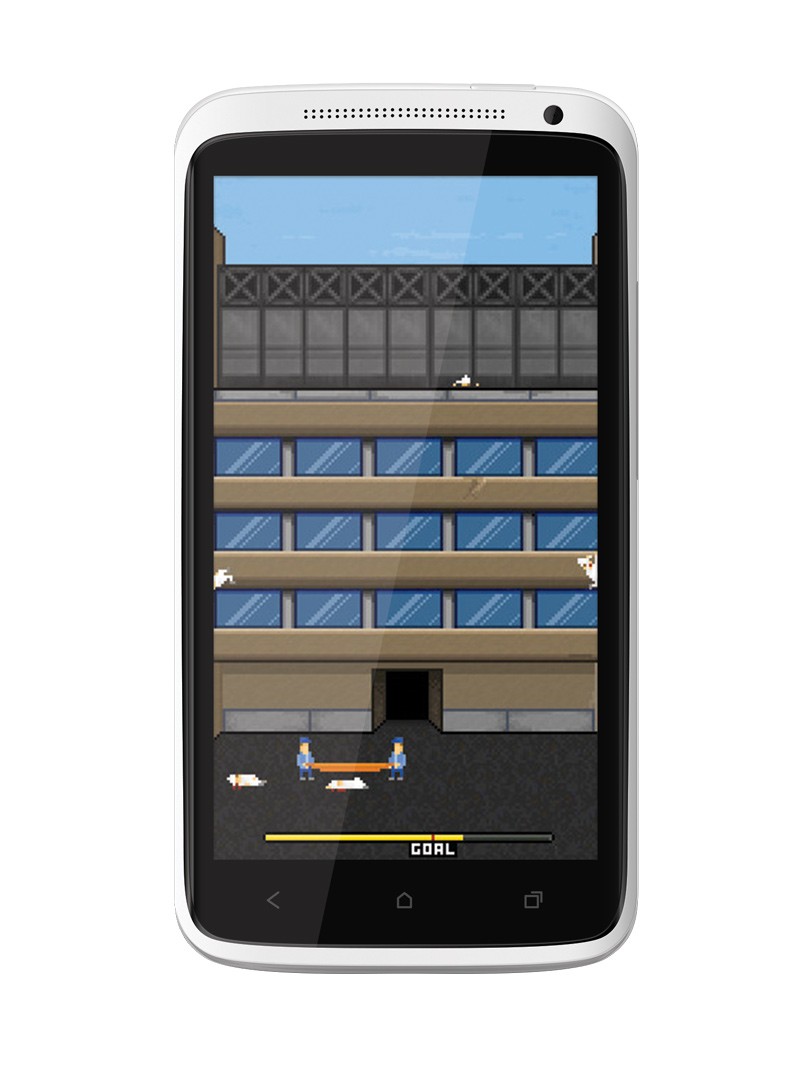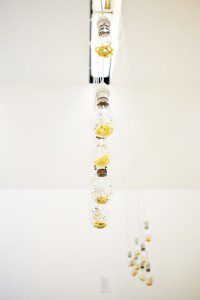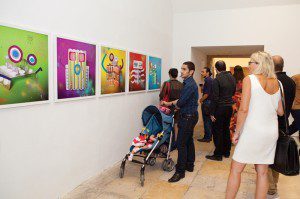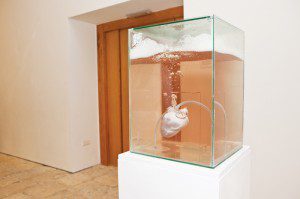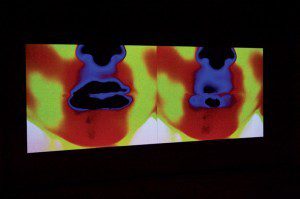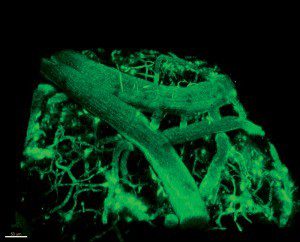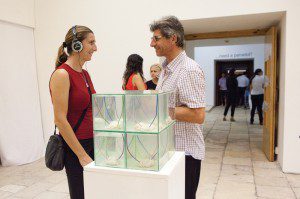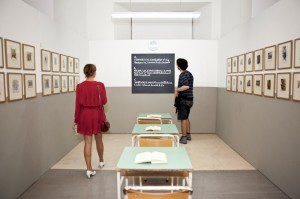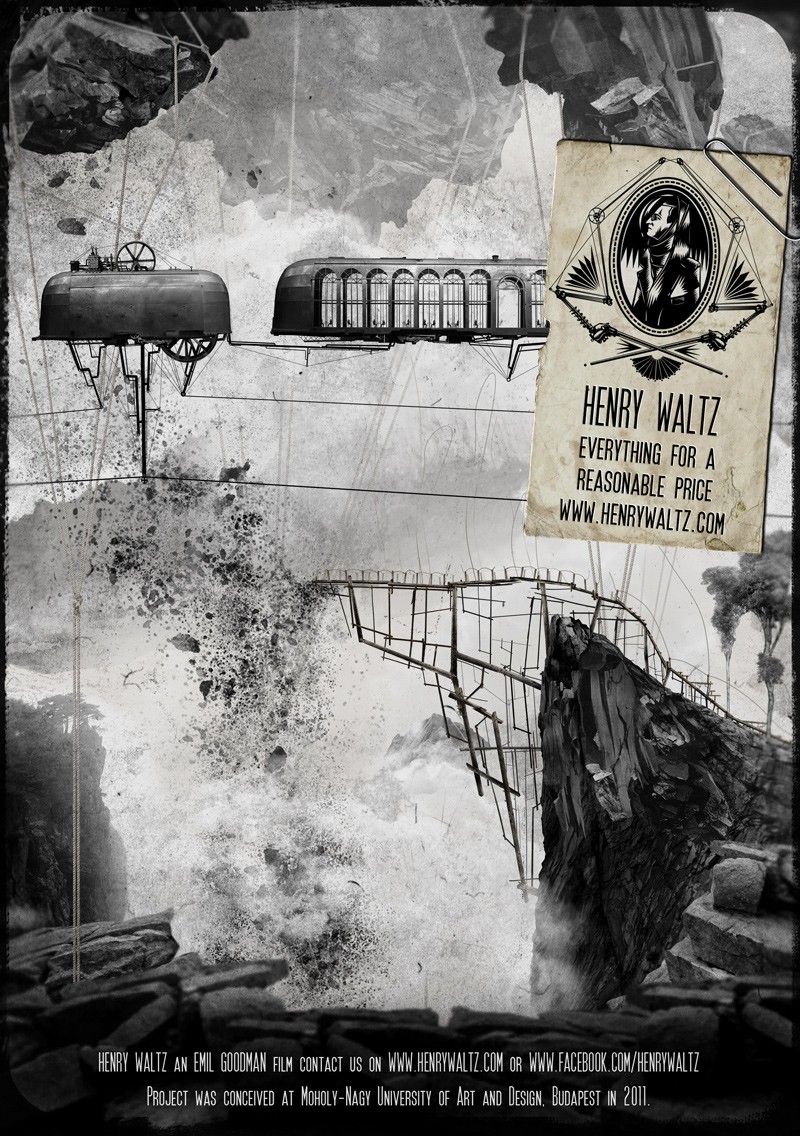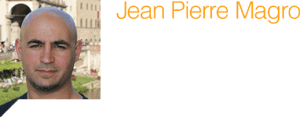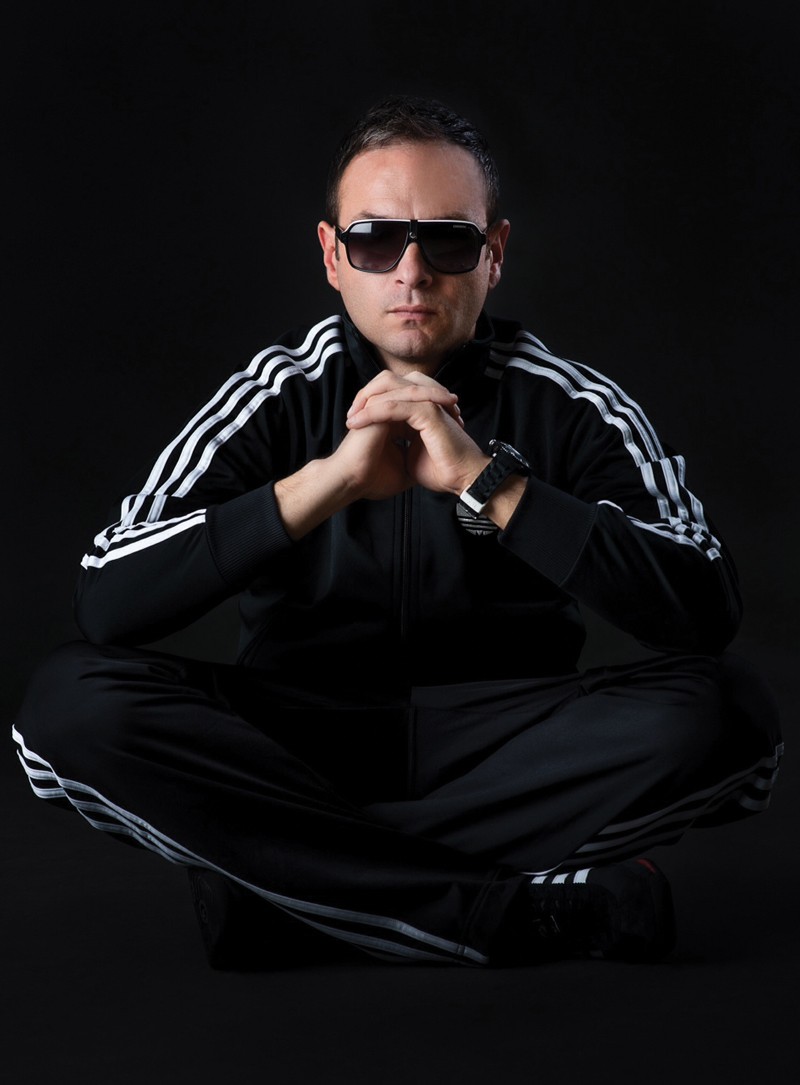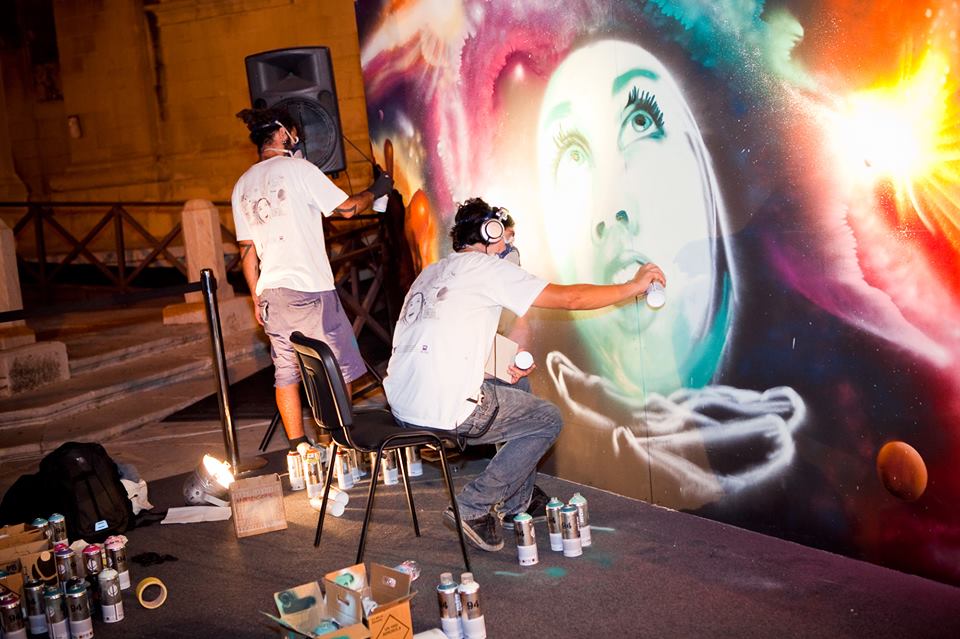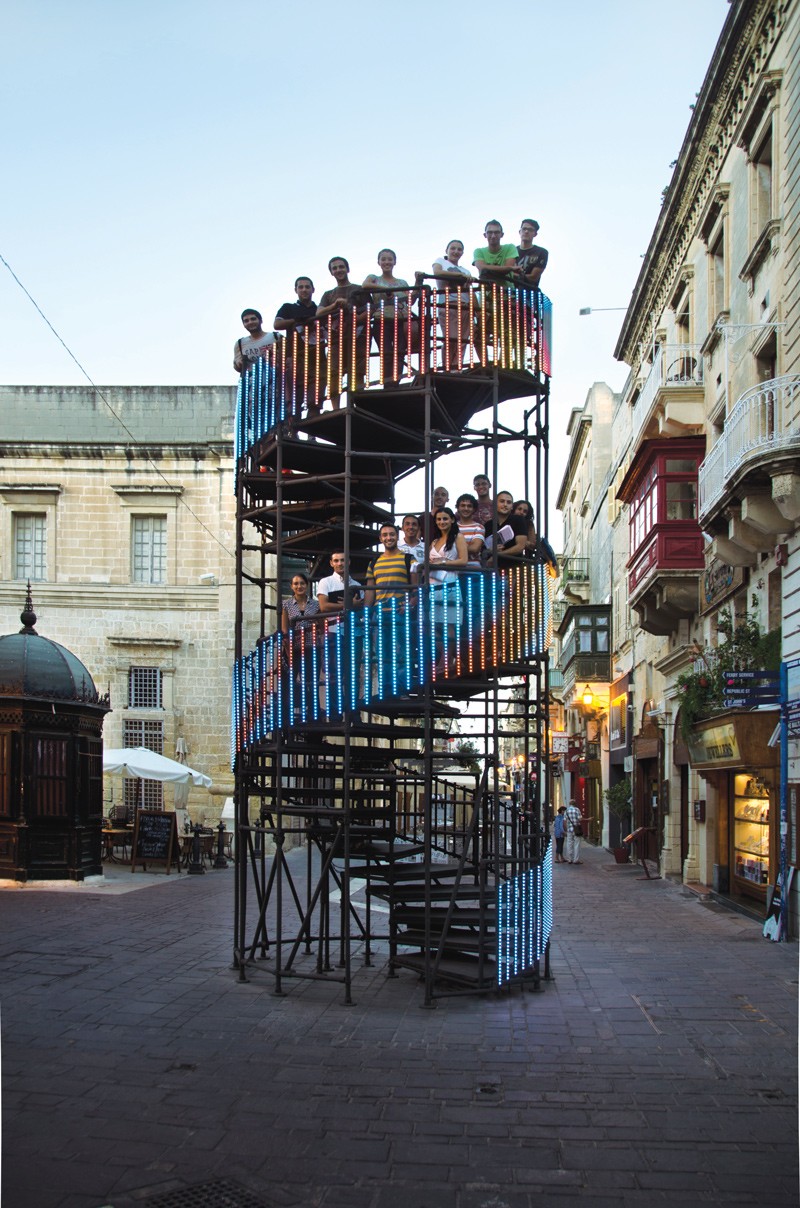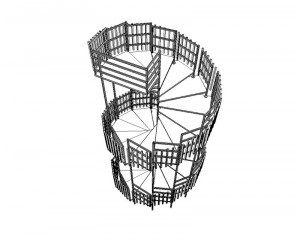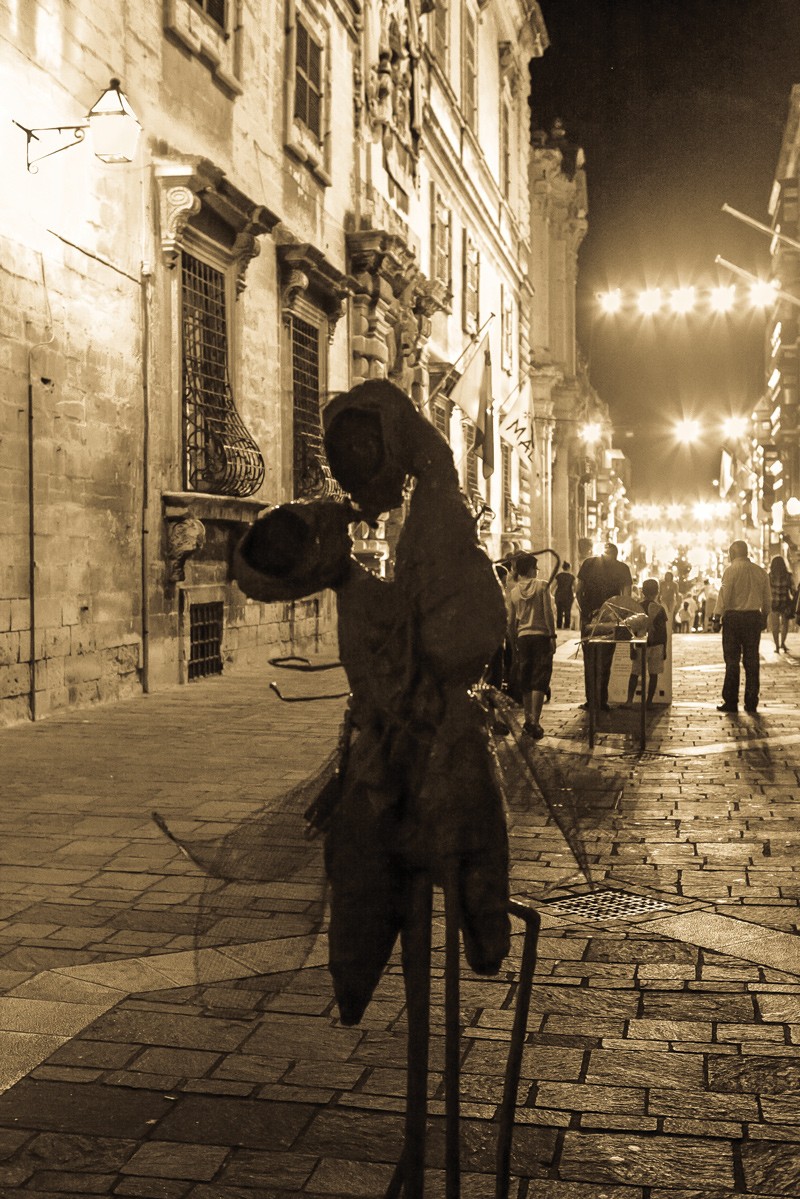Maniac: Two films. Two reviewers.

Noel: I recently saw William Lustig’s Maniac (1980) and Franck Khalfoun’s 2012 remake back-to-back. The latter is rather faithful to the original’s spirit. Frank Zito (played by Joe Spinell [1980] and Elijah Wood [2012]) is more of a textbook psychopath, and more brutal in Khalfoun’s film; but still remains faithful to its source.
Krista: I thought the first’s ‘rawness’ was more brutal. The second had a polished style despite the first person perspective. The 1980 film was grittier.
N: True. The remake looks slicker. For instance, the murder scenes are meticulously choreographed, operatic even. Lustig’s film is truer to life, scarier too, because in his lucid moments the killer acts normal.
K: The first person perspective didn’t convince me. Eventually I even forgot about it till it suddenly jumped to the fore again. It was inconsistent and uneasy without being very unsettling. It reminded me of Peeping Tom (1960), which made better use of the first person perspective.
N: Agree, but it didn’t distract me.
K: I hoped it would be more ‘distracting’. It would have been preferable if the first person perspective had been more defamiliarising, puncturing the viewer’s comfort zone — rather than just being ‘naturalised’.
N: The subjective point of view didn’t help me to get closer to the killer. I only saw this technique being used effectively in Enter the Void (2009). I find it a bit distracting because it can turn into a weird game (Spot the reflection in the mirror!). That said, in Maniac they were well aware of this and tried to have fun with it. The moments when the film veers away from the first person perspective, it sort of clicks into another gear.
K: Good point about the first person perspective being the default here, and the veering away from it becoming a ‘moment’ in itself. It calls to mind Bret Easton Ellis’ book American Psycho (1991).
N: I liked the fact that the remake created a deeper relationship between Frank and the mannequins. They are more than just a manifestation of his childhood trauma — a dysfunctional, promiscuous mother. The restoration of the mannequins is a genuine labour of love which underscores the affection that he nurtures towards the photographer (Anna, played by Nora Arnezeder). She is a mediocre artist unable to hold her camera properly. Frank is the real deal, getting his hands dirty.
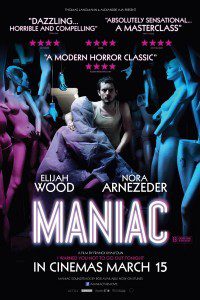
K: That’s a well-noted criticism of the photographer. In the first movie, I couldn’t really ‘judge’ whether she was a good artist or not — there wasn’t a focus on her art, instead they showed the world she moves around in, which made me think she was a budding artist. In the second one she’s portrayed as an underwhelming artist. She tries to use the mannequins to underpin her art and to somehow appropriate his by projecting an image of her face onto their blank heads.
N: Besides Anna, two other victims in Khalfoun’s film are a dancer and an agent. In both murders the director abandons the first person perspective, suggesting that either Frank is seeing his actions as a form of art, or that we, the audience, should see Frank himself as a work of art.
K: Yes, perhaps even perverting the sublime into the brutally grotesque. Yet ‘getting his hands dirty’ is counterpoised by the film’s stylishness.
N: So which is better?
K: Both films ultimately do different things. This is down to stylistic differences, enjoyably the remake doesn’t try to ‘replace’ Lustig’s film.
N: Totally agree. They’re like brothers sharing one (hell of a disturbed)
mother, similar yet so different. •
https://www.youtube.com/watch?v=4umIfrP_vMk
Hand pose replication using a robotic arm
Robotics is the future. Simple but true. Even today, they support us, make the products we need and help humans to get around. Without robots we would be worse off. Kirsty Aquilina (supervised by Dr Kenneth Scerri) developed a system where a robotic arm could be controlled just by using one’s hand.
The setup was fed images through a single camera. The camera was pointed towards a person’s hand that held a green square marker. The computer was programmed to detect the corners of the marker. These corners give enough information to figure out the hand’s posture in 3D. By using a Kalman Filter, hand movements are tracked and converted into the angles required by the robotic arm.
The robotic arm looks very different from a human one and has limited movement since it has only five degrees of freedom. Within these limitations, the robotic arm can replicate a person’s hand pose. The arm replicates a person’s movement immediately so that a person can easily make the robot move around quickly.Controlling robots from afar is essential when there is no prior knowledge of the environment. It allows humans to work safely in hazardous environments like bomb disposal, or when saving lives performing remote microsurgery. In the future, it could assist disabled people.
This research was performed as part of a Bachelor of Engineering (Honours) at the Faculty of Engineering.
A video of the working project can be found at: http://bit.ly/KkrF39
PHONE STORY
What is the story behind our smart phones? Phone Story retraces the production stages of our favorite products, showing us the dramatic working conditions behind their assembly. It seems like Apple didn’t like it: the game is now banned from the App Store.
Mass riots and frequent suicides shed a dark light on Foxconn, the company that assembles product for the likes of Apple, Microsoft, and Amazon. Afterwards, it became impossible to ignore the conditions of the workers that mass-produce contemporary tech gadgets.
Enter Molleindustria, the software house funded by Paolo Pedercini, responsible for a remarkable series of ferociously satirical, “serious” games (check molleindustria.org for more — it’s worth it). Phone Story takes us through an uncomfortable ride of funny minigames with classic, familiar mechanics juxtaposed to harsh vignettes: underage miners extracting silicon, suicidal workers jumping from the roof of the factory, and an army of Apple — pardon, “Pear” — fans taking a flagship store by storm.
Don’t expect a radical new gaming experience with Phone Story, but pick it up if you’d like to reflect on the process that brought you your mobile, while you’re
actually holding it in the palm of your hand.
https://www.youtube.com/watch?v=sSMSFLAsNzc
HOW?
An interactive exhibition in the upper galleries of St James Cavalier aimed towards adults and children. It ran from the 28th September till the 28th October as part of the Science in the City festival. The exhibition brought science and art together with local artists exploring various scientific phenomena. How does the human mind work? How can a fly be compared to a human or be useful towards the future of the human race? How is a child born with a deformity? How does something stretch but get fatter?…
Each artist reflected on scientific research, and had the opportunity to work with Maltese scientists in their chosen area for inspiration and accurate results.
Exhibition Sponsors: St James Cavalier, Nexos Lighting Technology, Malta Arts Fund
How to get rid of fruit flies?
Sarah Maria Scicluna. Scientists consulted: Dr Edward Duca and Dr Ruben Cauchi who studies muscle wasting diseases using the fruit fly
Fruit flies are commonly viewed as pests by the agricultural industry and in households. Scientists view these insects differently, having studied them for over 100 years. They’ve found out how organs develop, how genes are inherited and learn more about obesity, diabetes and muscle-wasting diseases — these killed Chinese chairman Mao Zedong. At the University of Malta, Dr Ruben Cauchi is studying similar muscle-wasting diseases. Fruit flies share around 70% of human genes that cause disease, allowing scientists to use fruit flies to understand ourselves — an ironic twist.
The fruit flies used for this work were housed in lightbulbs modified to provide them with everything they needed to survive. The flies were flightless mutants, since their genetic code had been altered to stunt their wing growth. The mutation provides irony to its name and renders it unable to survive in the wild.
The techibots
Elisa Von Brockdorff
Say hello to the TechiBots! Technology is a welcome element to contemporary living, yet it can often create a society dependent on it. It can transform man into ‘programmed’ creatures, on which many decisions, procedures and strategies are often based. Systems collapse once technology fails, even momentarily! Agitation and anxiety soar!
Inspired by George Ritzer’s McDonaldization of Society, the TechiBots are constructed out of pill sheets, utilizing the structured material element as a basis for this rampant creature.
O Ye of Little Faith (heart)
Matthew Farrugia
We all need a heart to live. Your body dies within minutes if it stops. The heart is mostly pure muscle, it is around the size of your fist, and located a little to the left in the middle of the chest. The heart’s job is to pump blood around your body to provide oxygen and nutrients.
This responsibility leaves the heart prone to complications. The most common complication is heart failure, which is when it cannot pump enough blood to the rest of the body. Most of the time this is because of a heart attack when blood flow is blocked, which is the most common kind of complication. Other more severe heart diseases include Angina which is when the heart isn’t getting enough blood, giving a severe pain in the chest.
The Human Brain: The only known structure that can study itself
Michael Xuereb. Scientists consulted: Dr Mario Valentino and his team who study the mouse brain
When scientists research, examine, and map the brain, they are using the same organ they are studying. This simple fact is celebrated in Xuereb’s installation. He magnifies a single connection point from the trillions of connections in our brain called ‘connectomics’. Connectomics is used by scientists to project complex brain images. These connections transfer signals and commands that together compute our thoughts. These can be thoughts about what to wear, who we love, mathematical calculations or even reasoning our emotions.
 4.1868: The Theory of Heat
4.1868: The Theory of Heat
Adrian Abela, actors & performers: Tia Rejlić, Martha Vassallo, and Aidan Corlett. Scientists consulted: Prof. Kenneth Camilleri and his team who research biomedical engineering at the University of Malta.
4.1868 discusses various theories of how life began, such as that by Charles Darwin, using both a visible camera and a thermal imaging camera donated for this exhibition by Prof. Kenneth Camilleri and his team at the University of Malta. Adrian Abela interprets the traditional story of Melqart, the God of the Sea and Underworld, through a scientific eye. Thermal imaging cameras are used to diagnose disease and study medical problems. They detect radiation in the infrared range of the electromagnetic spectrum (roughly 9,000–14,000 nanometres or 9–14 µm) and produce images of that radiation, called thermograms.The installation was a 40 minute video.
Brain study 
Scientists consulted: Video by Dr Mario Valentino and Dr Christian Zammit
Dr Mario Valentino (University of Malta) has carried out extensive studies on mouse brains to find out how brain injury occurs and develops in humans. During this research, Dr Valentino captured striking 3D images of mouse brains, which were then displayed in St James Cavalier. The images are mainly focused on mouse vasculature on the surface of the brain and the close association of cells called astrocytes that maintain the blood-brain barrier, which is essential for the survival of neurons.
The Cuckoo’s Nest (brain)
Matthew Farrugia. Scientists consulted: Prof. Giuseppe Di Giovanni and his team, and Dr Neville Vassallo who are studying brain diseases at the University of Malta
The brain is a wonderful organ — what would we be without it?It is able to absorb information and hold memories and keep it stored for years to come. The brain is divided into various parts, all linked and working together. The brain is more complicated than the heart, and is prone to going wrong. Addiction, epilepsy, Huntington’s, Alzheimer’s and Parkinson’s disease, are all illnesses the root of which lies in the brain.
Medical School: How does medicine define the body?
Raphael Vella. Scientists consulted: Textbooks used by medical students at the University of Malta
A series of fifty, small mixed media works were displayed on the walls of a classroom within a room in St James Cavalier, complete with blackboard. The images are photographic transfers on paper, reworked in ink, graphite and additional layers of Chinese paper. This installation of fifty framed, photographic images transports us from the beginnings of the power of medicine over the infant’s body, through the internalisation of medical knowledge via the mechanical components of ‘public health’ policies and systems, and ending with postmortem analyses that conceptualise murder and suicide in the cold language of science.How does medicine define the body? How is the body constructed in the image of medical textbooks? And how does the inaccessibility of medical knowledge to ordinary persons affect their understanding of their own bodies?
From Hollywood to Cannes
From DJ to videographer: Ruby on Science
Lily Agius, the artistic curator of Science in the City met up with DJ Ruby to talk about science and art. Ruby created a video for Science in the City that will be available in 2013 on scienceinthecity.org.mt
– Recently, you progressed from DJ to VJ (video jockey). Was it a hard transition?
No, not really, because it has taken quite a few years to get it in motion. For the past 5 years I have been working with videography on an amateur basis, but all of a sudden at the beginning of this year I decided to take it on professionally, and in a matter of few weeks I learned all that I needed to.
– Which was the art installation or event that you enjoyed the most?
Certainly the live music session by Andrew Alamango and Mario Sammut a.k.a Cynga. It was electronically based, which is my cup of tea.
– One of the exhibits in the exhibition at St James presented fruit flies within their own eco system in bulbs. These organisms are used to investigate muscle-wasting diseases, obesity, cancer, diabetes, and more. Did you ever imagine that humans could be related enough to a fruit fly to use them to learn more about human disease?
I never knew about it before. I was mesmerised to find out at the exhibition at St. James. That was very interesting!
– How did you feel when interacting with the art: climbing the DNA staircase, or entering the echo-proofed room in Strait Street?
It was an amazing experience, not just as a regular person attending the event but also as film maker while on the job.
– Have you ever been to a festival of its kind in Malta or abroad before?
It was a first for me, and was very impressed about how professional the event was.
– Did you expect to see something more from the festival? Is there anything you would like to see at the festival next year?
Well, from my point of view it may be no surprise to hear me say: more music.
– How would you describe the audience of the Science in the City Festival?
People of all ages and from all walks of life were there — it was certainly an event for everyone!
– Do you think that art can be used to explain science?
Yes it can, Science in the City proved that.
– How does science play its part in your own life?
I am very into IT, computers, software, gadgets and electronic music/visual. Technology is all around me and with me everyday, and forever evolving and improving.
Part of Science in the City, Malta’s Science and Arts Festival
For more stories click here
For more information on DJ Ruby: www.pureruby.com or www.facebook.com/djruby. For Ruby’s videography and visual work: www.facebook.com/puremediamalta
Destroying boundaries through Science in the City
Biomedical Ph.D. student Alexandra Fiott (TV show and logistics) shares her thoughts on why the walls between the public and scientists need to come crumbling down.
Climbing your DNA
You are the staircase
Norbert Francis Attard
Scientists consulted:
Prof. Alex Felice
Location: Merchant Street
Sponsors: Nexos Lighting
Technology, Kee-Klamps system, Joseph F. Spiteri and Co. Ltd
Mad About Video Multimedia
Dr Edward Duca talks about a single strand of DNA which transformed Valletta’s streetsContinue reading
Humanised Fruit Flies


